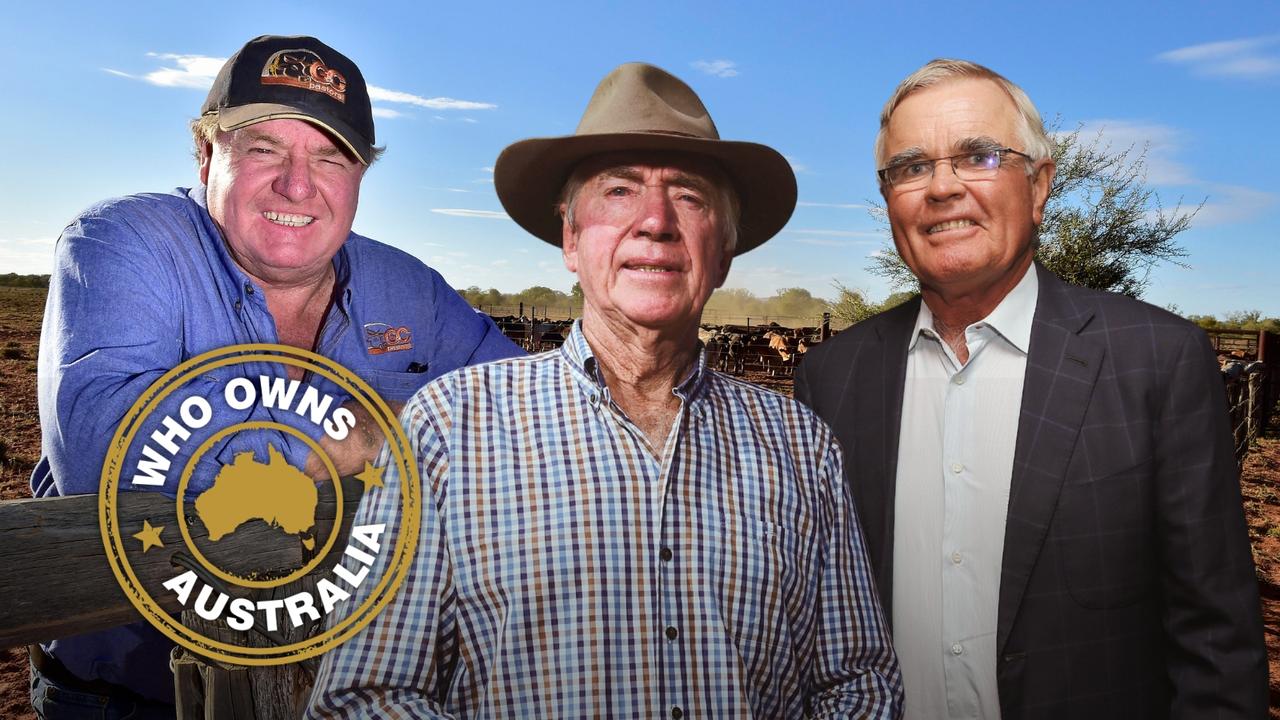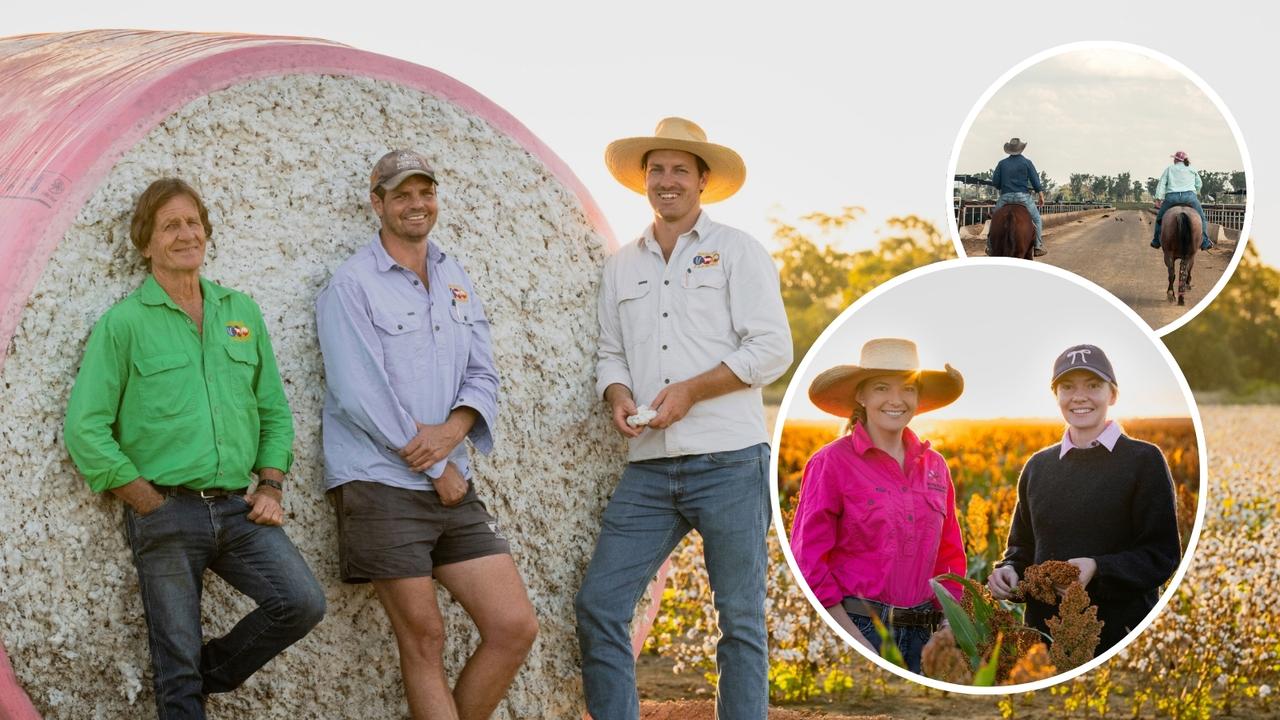Scott de Bruin of Mayura Station on how he built his Wagyu empire
It’s a fine art, building one of the most successful Wagyu brands in the country. See how Scott de Bruin leads the way in the now-multibillion-dollar industry.

Scott de Bruin slowly navigates his vehicle to the side of a dirt road on his South Australian farm.
“While we’re here, I’ll show you something,” says the leading beef producer, who many of his peers credit as a pioneer of Australia’s modern-day and now multibillion-dollar Wagyu industry.
With that he flings open his door and bounds out of the airconditioning into the blistering summer heat. There’s little time to question his logic.
“Check it out,” de Bruin says, hands on hips, proudly gesturing to a larger-than-life sculpture of a bull made out of rusted used machinery parts that he commissioned Marulan NSW artist Shannon Hobbs to create. “The detail in it is fantastic. He has got the shape right. He has even got a kick-starter from a motorbike in here – it is really cool.
“We’ve got a life-size version down at the restaurant but I wanted one that was 25 per cent bigger.”
The sculpture, which arrived at de Bruin’s historic 3640-hectare Mayura Station near Millicent in the agriculture-rich Limestone Coast region only weeks earlier, is so much more than an everyday piece of artwork.

It is a symbolic statement of success. One that pays homage, in more ways than one, to the nuts and bolts of Mayura’s multimillion-dollar business empire. An empire that now comprises 12,000 full-blood Wagyu cattle turning off 75 tonnes of highly marbled premium retail beef a month to an ever-growing international and domestic clientele.
The sculpture depicts prized Mayura sire Itoshigenami Junior who, along with his progeny, has revolutionised not just de Bruin’s operation but the Wagyu breed globally to the tune of tens of millions of dollars in retail beef receipts.
“Junior was a real game changer for us,” de Bruin explains. “He is the most proven Wagyu sire outside of Japan (the breed’s native country with 98 per cent of the world’s full-blood herd), but I don’t even know how many sires in Japan would have as many carcasses that have been third-party analysed. He would be up there as one of the most proven bulls of any breed in the world.”
Consistency, de Bruin says, is what stood Junior out from the crowd. Born in 2005, the bull embedded a particularly strong imprint on his progeny – which continue to produce extremely high marbling, and ultimately better tasting, beef time and again.
Junior died in 2018 but not before developing an almost cult-like following globally. Such is the demand for Junior’s genetics that his semen has fetched as much as $72,500 a straw in Australia and $A82,500 a straw in the US.
De Bruin even resisted lucrative propositions to part with the animal.
“I was offered half a million dollars to sell him maybe eight or nine years ago, and I turned it down,” he says. “At the time he was adding a million dollars a year more value in our meat sales, because he was always pushing that high level.”
Junior’s senior industry standing is just another chapter in the greater Mayura Station success story. Selected in 1845 as one of South Australia’s first pastoral leases, the property has a long and proud history as home to a number of agricultural pursuits.
Traditionally a Merino sheep breeding district, this part of South Australia’s South East is now home to everything from prime lambs to dairy and cropping, viticulture and even forestry.
Beef cattle are less frequent. Wagyu, de Bruin points out, even more scarce.
The breed turned plenty of heads locally when introduced to Mayura in the 1990s at the insistence of de Bruin’s late father, Adrian (founder of Auspine, which had amassed 40,000 hectares of tree plantations by the time it was sold to Tasmanian forestry giant Gunns in 2007).
De Bruin Senior, who bought his first piece of the station in the 1970s and added the homestead block in the 1990s, had encountered Wagyu during several work trips to Japan and had fallen in love with the beef and breed.
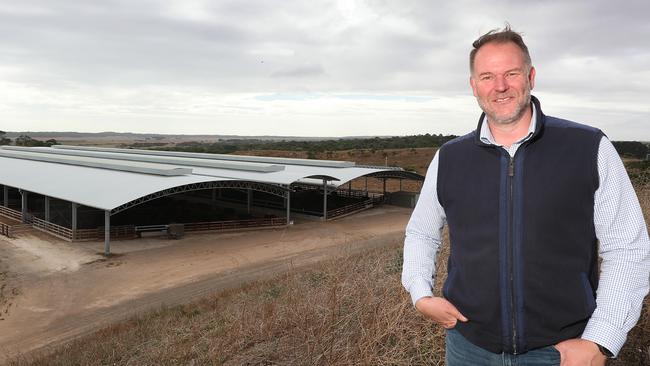
Twenty-five Wagyu females that arrived from Japan, via the US, in January 1998 as part of one of the first shipments of full-blood Wagyu cattle to Australia formed the foundation of the Mayura Wagyu herd.
The rest, as they say, is history. Mayura is now a beef powerhouse home to 4500 full-blood Wagyu breeding females with a scientific strategy for success employed from well before conception right along the supply chain to the china plates of some of the world’s most revered restaurants.
The Mayura’s production system is very much geared around performance with no time nor tolerance for second placegetters.
At six months of age, fresh off their mothers, calves enter a “range feeding” program in the paddock for about 270 days where they are supplementary fed a silage-based ration, with some grain, daily to ensure frame and muscle development.
Twelve months later, the best-performing cattle graduate to one of Mayura’s two undercover finishing barns. The latest, at 12,000 square metres and resembling somewhat of a large aeroplane hangar, was complete in September 2021 at a cost of $2.5 million. It has capacity to hold 1600 cattle.
Here, they are fed for another 270 days a wheat-based ration also containing corn, meal, bran and, of all things, chocolate, to enhance flavour and marbling. (When chocolate – introduced initially as a gap-fill measure – was removed from the ration some years ago, it came close to causing an international incident due to an uproar from discerning diners in Singapore and Hong Kong who noticed the difference.)
Cattle are transported to Pakenham in Victoria for slaughter at the G & K O’Connor abattoir. The monthly turn-off of about 240 cattle produces about 75 tonnes of retail beef (another production rise in 12 months’ time will increase output to about 100 tonnes a month) sold under one of three labels: the entry level Gold label, Platinum and top-shelf Signature brand. Carcass feedback from the abattoir dictates future breeding decisions.
Mayura enjoys strong support from some of the world’s most discerning palates. While during the middle of last decade its market ratio was 75:25 in favour of the export trade, there is now a 60:40 focus tilted towards local sales.
Sydney and Melbourne food service dominate domestically (a 300g Mayura Station scotch fillet with a marble of 9-plus will set you back $185 at Steer Dining Room in Melbourne’s swanky South Yarra, for example) with Western Australia, South Australia and Queensland also taking good quantities.
De Bruin’s own on-farm restaurant, The Tasting Room, which opened in 2010 to showcase Mayura’s wares and offer diners an ultimate paddock-to-plate experience, enjoys solid bookings and has won numerous industry and tourism accolades, including national steakhouse of the year in 2019.
Mayura started exporting beef in 2004 and de Bruin is the first to admit that establishing a foothold in overseas markets during the early days of the Wagyu phenomenon was critical to its success.
“We were one of the first people to start producing and marketing full-blood Wagyu beef – that was a great opportunity for us but I think if you were starting now it would be much more difficult. There’s a lot more established brands and you’d have to work a lot harder to see people,” he says.
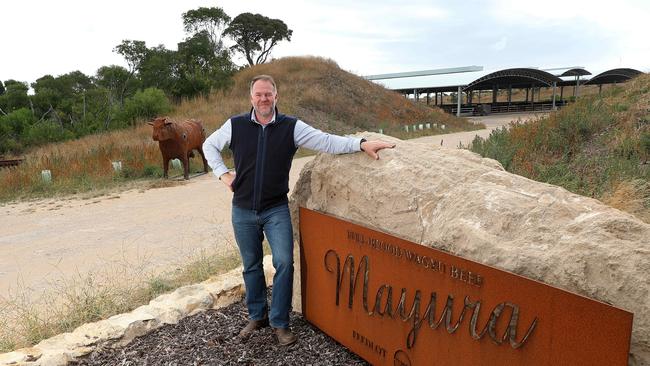
“Realistically here within Australia, it was very much a case of slaughter the animal, pack up an Esky and start knocking on doors – and that’s what I did. And the same happened when I decided to export.”
At the end of 2003 de Bruin flew to Hong Kong for meetings with potential distributors. His timing couldn’t have been better. Within months mad cow disease was detected in a lone dairy cow in the US state of Washington, which up-ended the dynamics of the global beef trade. Asia effectively shut up shop to American beef, leaving a gaping supply hole at the top end of the market.
“You hear people say ‘right place, right time’ but I really think that was the case,” de Bruin says.
China remains Mayura’s biggest international market, followed by South East Asia – the likes of Hong Kong, Taiwan, Malaysia, Singapore and Thailand – and Dubai and Saudi Arabia in the Middle East.
Among its high-profile supporters include the Bombana Otto E Mezzo 8½ restaurants throughout Asia, including one in Hong Kong that was the first Italian eatery outside Italy awarded a maximum three stars by culinary bible the Michelin Guide.
Sixteen hundred kilometres northeast of Millicent, at Aberfoyle in the rolling hills of the NSW New England region, Charlie Perry is busy drafting cattle. It is two weeks before the Australian Wagyu Association hosts its annual gala extravaganza in Sydney and as association chairman and president, he has plenty on his plate in addition to running his family’s Trent Bridge Wagyu herd.
The much-anticipated three-day WagyuEdge conference last month attracted a massive crowd of more than 600 delegates from around the world. It addressed issues pertinent to the industry ranging from emissions to global trends and from gene editing to disease response, and featured an expert line-up of speakers from Australia, the US, Japan and the UK.
An auction of genetics, held on a yacht in Sydney Harbour no less, saw bulls sell to a top of $160,000 and females fetch as much as $250,000.
Perry has headed up the Wagyu association since 2020 and is bullish about the breed’s future. He heaps praise on de Bruin and other industry pioneers who he says are responsible for the high esteem in which the Australian Wagyu industry is held internationally. Even in Wagyu’s native Japan, which for so long has been considered the breed’s world leader but now, in many areas, trails the Australian industry.
“We do things differently to Japan,” Perry says. “They still have leadership over that A5 absolutely top, top part of the carcass but I firmly believe we are world leading in terms of the volume and quality of the cattle we produce.”
That volume equates to more than 20 per cent of the 1.4 million cattle on feed in Australian feedlots. Some of the nation’s biggest landowners – ASX-listed Australian Agricultural Company, family-owned Hughes Pastoral Company and billionaire Gina Rinehart to name a few – have invested significantly in the Wagyu space.
There are headwinds, of course. Following the trend of the broader beef industry, prices for Wagyu cattle have come off in recent months due to issues including increased supply, uncertainty about the season following three successive wetter-than-average La Nina events and crucially, inflation, as the world battles with rising interest rates and cost-of-living challenges.
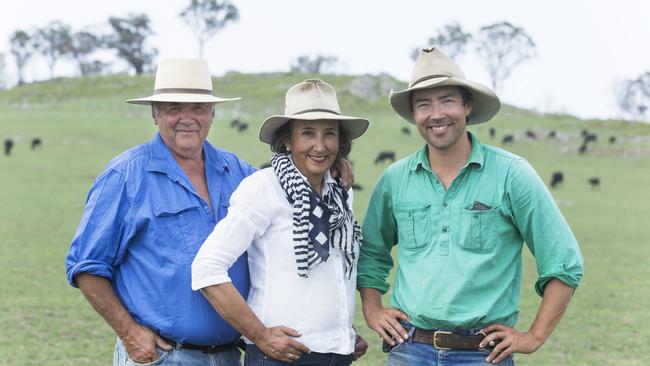
Perry says getting consumers to dig deeper in their pockets for a luxury eating experience in a time of economic uncertainty is a challenge but one that can be overcome through diversified markets. Ensuring every piece of the Wagyu – from nose to tail – is maximised on the consumer plate at a range of different price points is crucial to the future success of the industry.
“The thing to keep in mind is during the last big global financial crisis in 2008, everyone who ate Wagyu was a banker with a Black AMEX but that is not true anymore,” Perry says. “There is a massive population eating Wagyu now and they don’t eat it like a 400g steak – there’s various cuts and the product offers small amounts.
“Obviously it is not ideal for a luxury product to have an economic downturn but I’m still very confident.”
In terms of consistency and quality, Perry rates the Mayura Wagyu production system as “without peer” in Australia – and perhaps the world.
“What Scott has done is relentlessly pursue progress with all the tools available,” he says. “If you look at one of his productions, the quality there is spectacular. There are some great Wagyu supply chains in operation but I think Mayura is the best.”
Pivotal to that success remains Junior. So it’s by no accident that the new sculpture comes complete with a set of rusted keys attached to his old float-valve testicles.
It’s representative of one bull’s ability to unlock the potential of an entire industry. And the balls of one man to capitalise on it.
More Coverage





